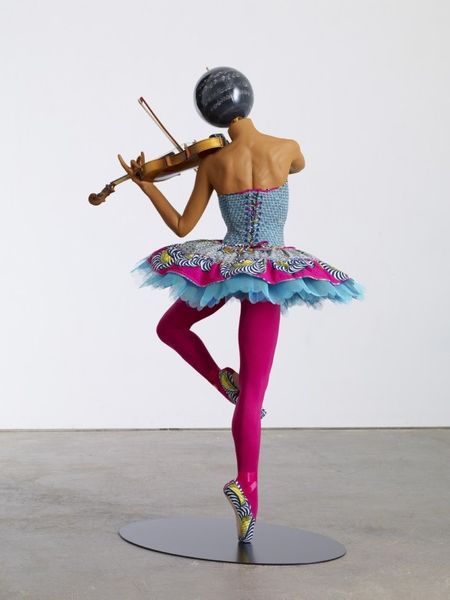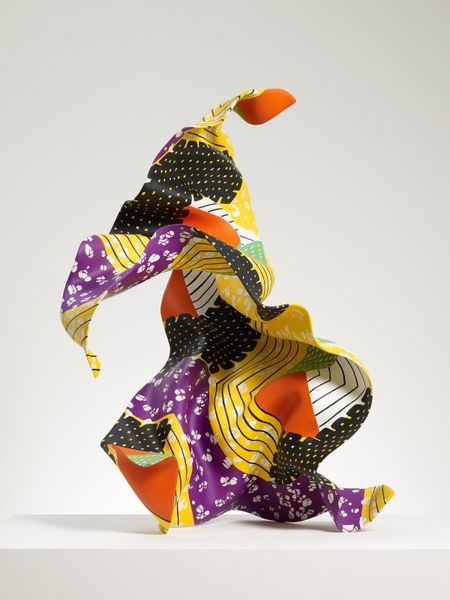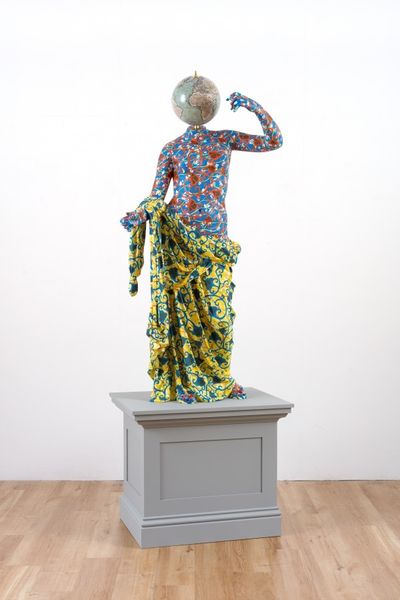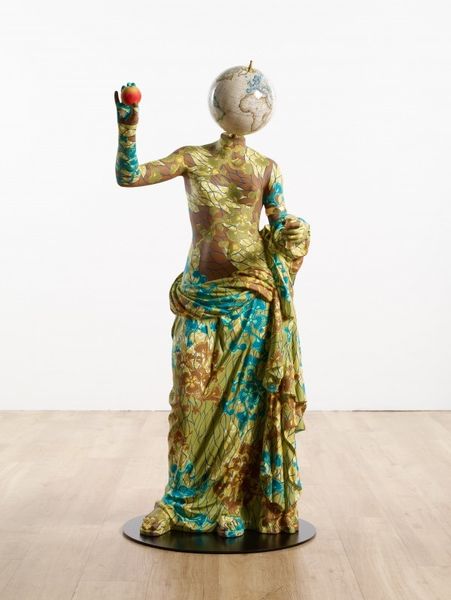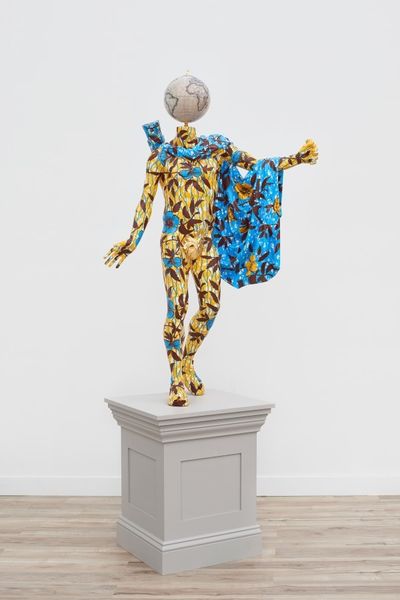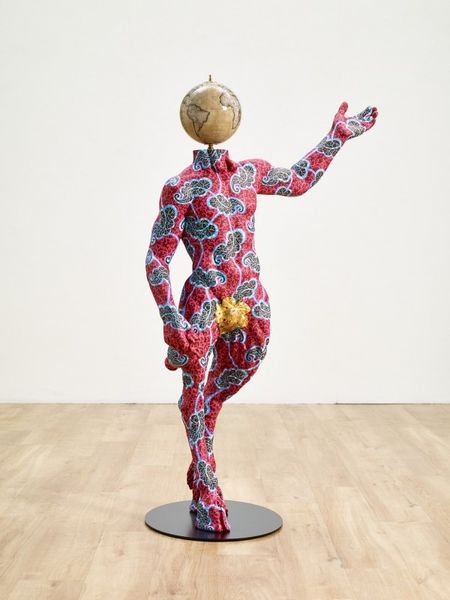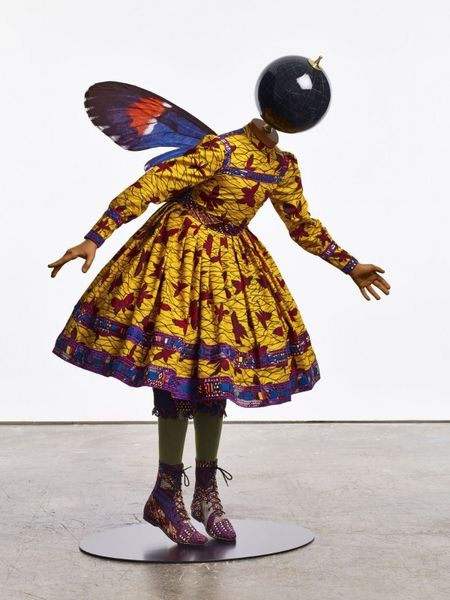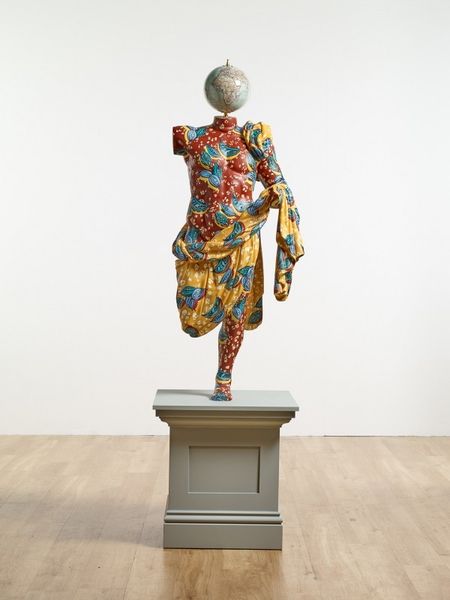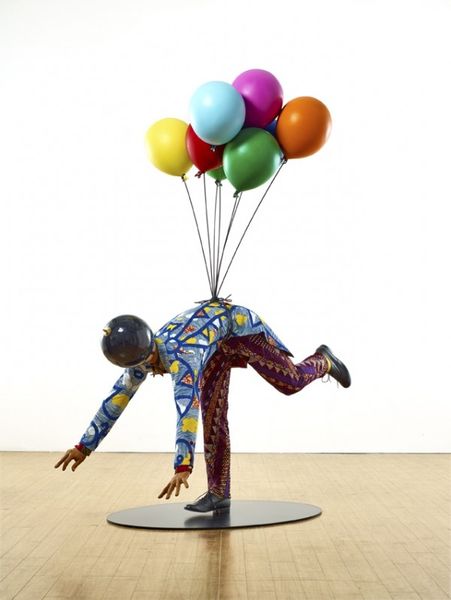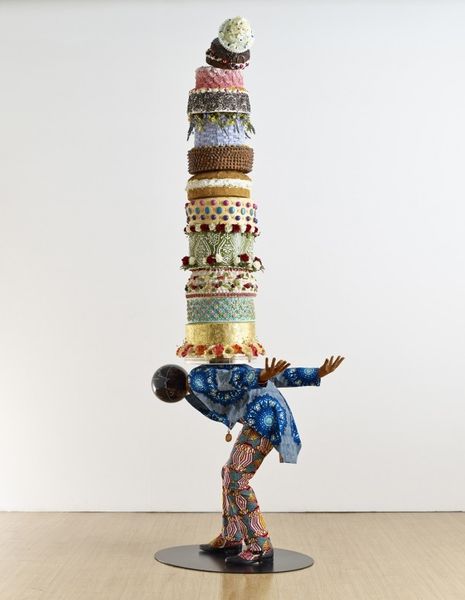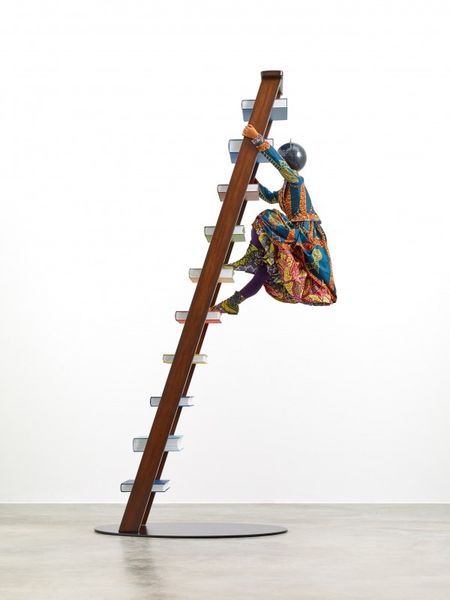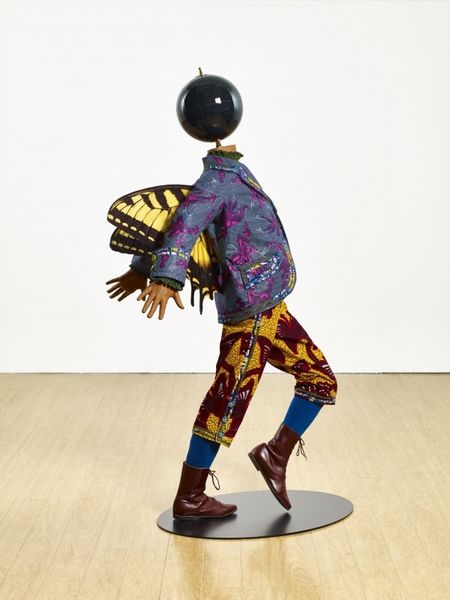
mixed-media, sculpture, installation-art
#
mixed-media
#
contemporary
#
appropriation
#
figuration
#
sculpture
#
installation-art
#
decorative-art
#
decorative art
Copyright: Yinka Shonibare,Fair Use
Editor: So here we have Yinka Shonibare’s "Flower Girl," made in 2013 using mixed media. The initial thing that strikes me is the sheer vibrancy of colour and the almost playful composition, even though the headless figure does feel slightly unsettling. How do you interpret this work through a formal lens? Curator: It’s the textile and composition, the colour that attracts your eye. The Dutch wax cotton, a loaded signifier in Shonibare's work, creates an interplay with the traditional ballerina pose, an immediate and visual tension. How does the dress’s structure compare to the floral orb in the figure's hand? Editor: They're both visually dense, highly decorative but one evokes ideas about European high culture. It's a fascinating dichotomy to consider. Do you think the fabrics serve as an intentional disruption? Curator: Precisely. The material's vibrant patterns act as an active element. What's striking to me is how Shonibare marries traditionally opposing aesthetics: a traditional European ballerina with bold patterns. Do you notice a break, a literal one at that, at the head, a void rather filled by a disco ball-like sphere? Editor: That's true - there is an immediate disruption between what the flowers, dress and dancing position try to evoke with that 'missing' or absent part. What is your take? Curator: It’s less about reading specific symbolic meanings into it and more about acknowledging the visual and material conversation happening, almost shouting, in front of us. How does that alteration change the entire construction of the artwork, challenging established art and socio-economic power structures? Editor: It provides, strangely, a center through abstraction by diverting our gaze from a more recognizable face to a neutral spherical stand-in; making the rest, namely materiality and colours, truly pop! I did not look at it this way initially, thanks! Curator: Yes, the absence directs the viewer’s focus toward other aspects: the overall structure and materiality take on a more profound presence through it. Material culture allows an opening towards decolonizing and aesthetic codes within the traditional history of Western art! Editor: So, through formal analysis, we reveal both the superficial beauty of form and color, while acknowledging socio-economic issues around decolonization.
Comments
No comments
Be the first to comment and join the conversation on the ultimate creative platform.
